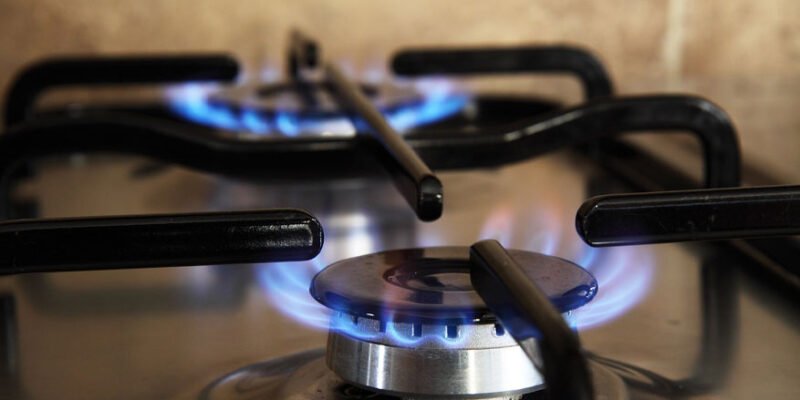Recipe for Disaster: Some Major Kitchen Accidents to Beware Of
The kitchen, a place where culinary magic happens, can sometimes turn into a danger zone. Amidst the sizzling pans, simmering sauces, and tempting aromas, there lurks a potential recipe for disaster.
In this article, we will shed light on some major kitchen accidents that demand your attention and caution. We will also provide valuable insights on how to avoid these calamities.
Let’s get started!
Pressure Cookers Explosions
Pressure cookers, designed to expedite cooking time and enhance flavors, are a common cooking appliance found in most homes. In 2022, the global pressure cooker market was valued at $5.08 billion. It is projected that this figure will grow to $5.48 billion in 2023 and to $8 billion by 2030. This shows a CAGR of 5.53% during the forecast period.
However, this popular kitchen tool can transform into a ticking time bomb if mishandled or faulty and result in catastrophic explosions. One common cause for this is improper sealing, where the lid fails to lock securely, allowing pressure to build up unchecked.
Manufacturing defects, such as faulty valves or inadequate safety mechanisms, can also play a role. Negligent operations, such as overfilling the cooker or sudden release of pressure, can further escalate the risk.
Frequent pressure cooker explosions have resulted in people taking the legal route and suing manufacturers for their product defects or inadequate warnings. As per an article published by TorHoerman Law, companies like Sunbeam Products Inc., SharkNinja, Wolfgang Puck, etc., have been named in recent lawsuits that allege serious injuries from pressure cooker explosions.
If you have suffered injuries or damages resulting from an exploding pressure cooker, you, too, may be entitled to seek financial compensation by filing an exploding pressure cooker lawsuit. Consult with a personal injury attorney who specializes in product liability to evaluate your case and explore your legal options.
Furthermore, you could try following proper usage guidelines to prevent such explosions in the future. Before each use, inspect the sealing ring, valves, and pressure release mechanisms for any signs of wear or damage. Ensure that the lid is securely closed and locked before initiating the cooking process. Regular maintenance and routine checks are also essential to mitigate risks.
Grease Fires
Grease fires pose a significant risk in kitchens and can escalate rapidly, causing extensive damage and posing serious threats to personal safety. They occur when cooking oil or grease reaches its ignition point and ignites, often leading to dangerous flames and billowing smoke. One common cause of grease fires is leaving unattended cooking oil on high heat, which can quickly overheat and ignite.
According to the National Fire Protection Association (NFPA), cooking equipment is the leading cause of home fires and fire-related injuries in the United States. Approximately 47% of these fires involve cooking oil or grease as the material first ignited.
Additionally, national estimates released by the Federal Emergency Management Agency reported a total of 170,000 incidences of cooking in 2021, resulting in 135 deaths, 3000 injuries, and $494,200,000 in dollar loss.
These figures paint an alarming picture, making it crucial to practice safe kitchen habits. Never leave cooking oil or grease unattended on high heat, and be cautious when heating oil to ensure it does not reach its smoking point. Keep a close eye on the cooking process and use a grease splatter screen when necessary.
In case of a small grease fire, it is crucial to have a fire extinguisher specifically rated for grease fires nearby and know how to use it. Never attempt to extinguish a grease fire with water, as it can cause the flames to spread rapidly.
Electrical Hazards
Electrical hazards in the kitchen can lead to serious accidents and pose significant risks to individuals and property. Faulty wiring, outdated electrical systems, and improper use of electrical appliances can all contribute to potential dangers.
According to the U.S. Federal Emergency Management Agency 2021 national estimates, electrical malfunctions accounted for an estimated 24,200 fires, 900 injuries, and 295 deaths. While not specific to the kitchen, electrical-related incidents can certainly occur in this area of the home.
To prevent electrical hazards in the kitchen, it is essential to follow electrical safety guidelines. Regularly inspect electrical cords and outlets for signs of damage or wear. Replace frayed or broken cords right away and stay away from utilizing extension cords as a long-term fix. Make sure that circuits are not overloaded and that all kitchen equipment is properly grounded.
Additionally, using electrical equipment safely can considerably lower the chance of accidents. Avoid placing electrical cords near heat sources or water, and never handle them with wet hands. Unplug appliances when not in use, and refrain from overloading outlets with multiple devices. Installing ground-fault circuit interrupters (GFCIs) in the kitchen can provide additional protection against electrical shocks.
Gas Leaks
Gas leaks in the kitchen pose a significant threat as they can lead to fires, explosions, and even asphyxiation. Natural gas, commonly used for cooking and heating purposes, is highly flammable and odorless. To ensure safety, an odorant called mercaptan is added to give it a distinct smell, often described as a “rotten egg” odor. However, gas leaks can still occur undetected, making them a silent menace.
The only way to reduce the hazards involved with a tragedy of this scale is by early diagnosis and prevention. Following are some critical actions to take:
- Maintain gas appliances: Ensure that gas-powered equipment, such as water heaters, stoves, and ovens, are regularly inspected and maintained. Ensure proper installation and look for signs of wear, corrosion, or damage.
- Check connections: Regularly inspect gas supply lines, valves, and connections for leaks. Apply a solution of soapy water to connections and watch for any bubbles, which indicate a leak. If you suspect a gas leak, turn off the gas supply immediately and seek professional assistance.
- Install a gas detector: Consider installing a gas detector in the kitchen or near gas appliances. These devices can detect the presence of gas in the air and emit an alarm, providing an early warning in case of a leak.
- Be mindful of odors: Familiarize yourself with the smell of natural gas. If you detect a strong odor of rotten eggs or suspect a gas leak, evacuate the area immediately and contact the gas company or emergency services.
In the event of a gas leak, prioritize safety by leaving the premises promptly and avoiding any actions that could ignite the gas, such as operating electrical switches or using open flames.
Conclusion
Foodborne illnesses resulting from improper handling and storage of perishable items, allergic reactions to certain ingredients, burns from hot surfaces or liquids, and even slips and falls on wet or greasy floors are some other accidents that could take place in the kitchen.
Understanding and addressing these risks through proper food safety practices, awareness of personal limitations, and maintaining a clean and organized kitchen environment can help enhance safety in the culinary domain.






